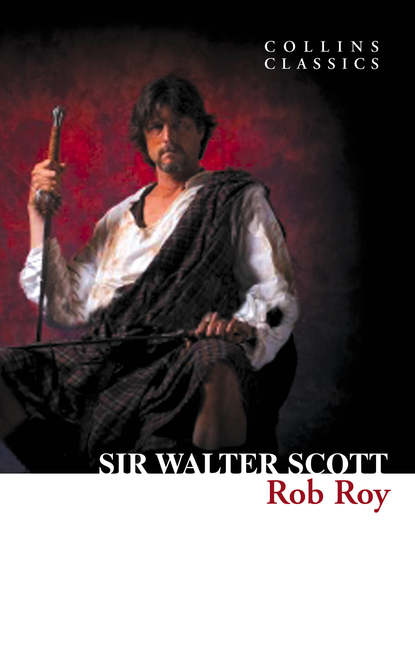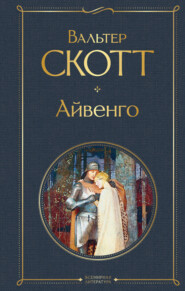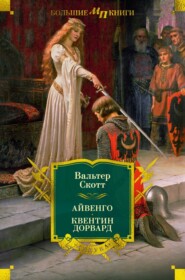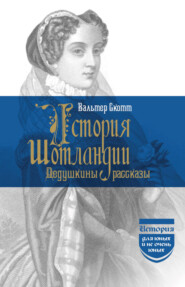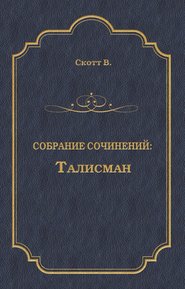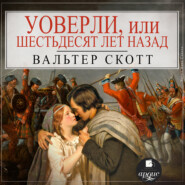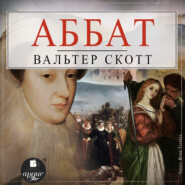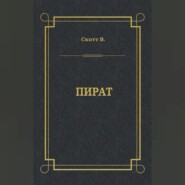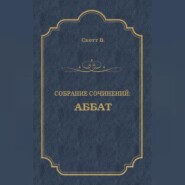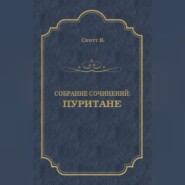По всем вопросам обращайтесь на: info@litportal.ru
(©) 2003-2024.
✖
Rob Roy
Настройки чтения
Размер шрифта
Высота строк
Поля
The devoted sept, ever finding themselves iniquitously driven from their possessions, defended themselves by force, and occasionally gained advantages, which they used cruelly enough. This conduct, though natural, considering the country and time, was studiously represented at the capital as arising from an untameable and innate ferocity, which nothing, it was said, could remedy, save cutting off the tribe of MacGregor root and branch.
In an act of Privy Council at Stirling, 22nd September 1563, in the reign of Queen Mary, commission is granted to the most powerful nobles, and chiefs of the clans, to pursue the clan Gregor with fire and sword. A similar warrant in 1563, not only grants the like powers to Sir John Campbell of Glenorchy, the descendant of Duncan with the Cowl, but discharges the lieges to receive or assist any of the clan Gregor, or afford them, under any colour whatever, meat, drink, or clothes.
An atrocity which the clan Gregor committed in 1589, by the murder of John Drummond of Drummond-ernoch, a forester of the royal forest of Glenartney, is elsewhere given, with all its horrid circumstances. The clan swore upon the severed head of the murdered man, that they would make common cause in avowing the deed. This led to an act of the Privy Council, directing another crusade against the “wicked clan Gregor, so long continuing in blood, slaughter, theft, and robbery,” in which letters of fire and sword are denounced against them for the space of three years. The reader will find this particular fact illustrated in the Introduction to the Legend of Montrose in the present edition of these Novels.
Other occasions frequently occurred, in which the MacGregors testified contempt for the laws, from which they had often experienced severity, but never protection. Though they were gradually deprived of their possessions, and of all ordinary means of procuring subsistence, they could not, nevertheless, be supposed likely to starve for famine, while they had the means of taking from strangers what they considered as rightfully their own. Hence they became versed in predatory forays, and accustomed to bloodshed. Their passions were eager, and, with a little management on the part of some of their most powerful neighbours, they could easily be hounded out, to use an expressive Scottish phrase, to commit violence, of which the wily instigators took the advantage, and left the ignorant MacGregors an undivided portion of blame and punishment. This policy of pushing on the fierce clans of the Highlands and Borders to break the peace of the country, is accounted by the historian one of the most dangerous practices of his own period, in which the MacGregors were considered as ready agents.
Notwithstanding these severe denunciations, – which were acted upon in the same spirit in which they were conceived, some of the clan still possessed property, and the chief of the name in 1592 is designed Allaster MacGregor of Glenstrae. He is said to have been a brave and active man; but, from the tenor of his confession at his death, appears to have been engaged in many and desperate feuds, one of which finally proved fatal to himself and many of his followers. This was the celebrated conflict at Glenfruin, near the south-western extremity of Loch Lomond, in the vicinity of which the MacGregors continued to exercise much authority by the coir a glaive, or right of the strongest, which we have already mentioned.
There had been a long and bloody feud betwixt the MacGregors and the Laird of Luss, head of the family of Colquhoun, a powerful race on the lower part of Loch Lomond. The MacGregors’ tradition affirms that the quarrel began on a very trifling subject. Two of the MacGregors being benighted, asked shelter in a house belonging to a dependant of the Colquhouns, and were refused. They then retreated to an out-house, took a wedder from the fold, killed it, and supped off the carcass, for which (it is said) they offered payment to the proprietor. The Laird of Luss seized on the offenders, and, by the summary process which feudal barons had at their command, had them both condemned and executed. The MacGregors verify this account of the feud by appealing to a proverb current amongst them, execrating the hour (Mult dhu an Carbail ghil) that the black wedder with the white tail was ever lambed. To avenge this quarrel, the Laird of MacGregor assembled his clan, to the number of three or four hundred men, and marched towards Luss from the banks of Loch Long, by a pass called Raid na Gael, or the Highlandman’s Pass.
Sir Humphrey Colquhoun received early notice of this incursion, and collected a strong force, more than twice the number of that of the invaders. He had with him the gentlemen of the name of Buchanan, with the Grahams, and other gentry of the Lennox, and a party of the citizens of Dumbarton, under command of Tobias Smollett, a magistrate, or bailie, of that town, and ancestor of the celebrated author.
The parties met in the valley of Glenfruin, which signifies the Glen of Sorrow—a name that seemed to anticipate the event of the day, which, fatal to the conquered party, was at least equally so to the victors, the “babe unborn” of Clan Alpine having reason to repent it. The MacGregors, somewhat discouraged by the appearance of a force much superior to their own, were cheered on to the attack by a Seer, or second-sighted person, who professed that he saw the shrouds of the dead wrapt around their principal opponents. The clan charged with great fury on the front of the enemy, while John MacGregor, with a strong party, made an unexpected attack on the flank. A great part of the Colquhouns’ force consisted in cavalry, which could not act in the boggy ground. They were said to have disputed the field manfully, but were at length completely routed, and a merciless slaughter was exercised on the fugitives, of whom betwixt two and three hundred fell on the field and in the pursuit. If the MacGregors lost, as is averred, only two men slain in the action, they had slight provocation for an indiscriminate massacre. It is said that their fury extended itself to a party of students for clerical orders, who had imprudently come to see the battle. Some doubt is thrown on this fact, from the indictment against the chief of the clan Gregor being silent on the subject, as is the historian Johnston, and a Professor Ross, who wrote an account of the battle twenty-nine years after it was fought. It is, however, constantly averred by the tradition of the country, and a stone where the deed was done is called Leck-a-Mhinisteir, the Minister or Clerk’s Flagstone. The MacGregors, by a tradition which is now found to be inaccurate, impute this cruel action to the ferocity of a single man of their tribe, renowned for size and strength, called Dugald, Ciar Mhor, or the great Mouse-coloured Man. He was MacGregor’s foster-brother, and the chief committed the youths to his charge, with directions to keep them safely till the affray was over. Whether fearful of their escape, or incensed by some sarcasms which they threw on his tribe, or whether out of mere thirst of blood, this savage, while the other MacGregors were engaged in the pursuit, poniarded his helpless and defenceless prisoners. When the chieftain, on his return, demanded where the youths were, the Ciar (pronounced Kiar) Mhor drew out his bloody dirk, saying in Gaelic, “Ask that, and God save me!” The latter words allude to the exclamation which his victims used when he was murdering them. It would seem, therefore, that this horrible part of the story is founded on fact, though the number of the youths so slain is probably exaggerated in the Lowland accounts. The common people say that the blood of the Ciar Mhor’s victims can never be washed off the stone. When MacGregor learnt their fate, he expressed the utmost horror at the deed, and upbraided his foster-brother with having done that which would occasion the destruction of him and his clan. This supposed homicide was the ancestor of Rob Roy, and the tribe from which he was descended. He lies buried at the church of Fortingal, where his sepulchre, covered with a large stone,
(#ulink_aae6f425-1c40-5a5d-9ba9-dff519f2254e) is still shown, and where his great strength and courage are the theme of many traditions.
(#ulink_1bfa0de7-4fcd-59f5-83e2-22cda943d166)
MacGregor’s brother was one of the very few of the tribe who was slain. He was buried near the field of battle, and the place is marked by a rude stone, called the Grey Stone of MacGregor.
Sir Humphrey Colquhoun, being well mounted, escaped for the time to the castle of Banochar, or Benechra. It proved no sure defence, however, for he was shortly after murdered in a vault of the castle,—the family annals say by the MacGregors, though other accounts charge the deed upon the MacFarlanes.
This battle of Glenfruin, and the severity which the victors exercised in the pursuit, was reported to King James VI. in a manner the most unfavourable to the clan Gregor, whose general character, being that of lawless though brave men, could not much avail them in such a case. That James might fully understand the extent of the slaughter, the widows of the slain, to the number of eleven score, in deep mourning, riding upon white palfreys, and each bearing her husband’s bloody shirt on a spear, appeared at Stirling, in presence of a monarch peculiarly accessible to such sights of fear and sorrow, to demand vengeance for the death of their husbands, upon those by whom they had been made desolate.
The remedy resorted to was at least as severe as the cruelties which it was designed to punish. By an Act of the Privy Council, dated 3rd April 1603, the name of MacGregor was expressly abolished, and those who had hitherto borne it were commanded to change it for other surnames, the pain of death being denounced against those who should call themselves Gregor or MacGregor, the names of their fathers. Under the same penalty, all who had been at the conflict of Glenfruin, or accessory to other marauding parties charged in the act, were prohibited from carrying weapons, except a pointless knife to eat their victuals. By a subsequent act of Council, 24th June 1613, death was denounced against any persons of the tribe formerly called MacGregor, who should presume to assemble in greater numbers than four. Again, by an Act of Parliament, 1617, chap. 26, these laws were continued, and extended to the rising generation, in respect that great numbers of the children of those against whom the acts of Privy Council had been directed, were stated to be then approaching to maturity, who, if permitted to resume the name of their parents, would render the clan as strong as it was before.
The execution of those severe acts was chiefly intrusted in the west to the Earl of Argyle and the powerful clan of Campbell, and to the Earl of Athole and his followers in the more eastern Highlands of Perthshire. The MacGregors failed not to resist with the most determined courage; and many a valley in the West and North Highlands retains memory of the severe conflicts, in which the proscribed clan sometimes obtained transient advantages, and always sold their lives dearly. At length the pride of Allaster MacGregor, the chief of the clan, was so much lowered by the sufferings of his people, that he resolved to surrender himself to the Earl of Argyle, with his principal followers, on condition that they should be sent out of Scotland. If the unfortunate chief’s own account be true, he had more reasons than one for expecting some favour from the Earl, who had in secret advised and encouraged him to many of the desperate actions for which he was now called to so severe a reckoning. But Argyle, as old Birrell expresses himself, kept a Highlandman’s promise with them, fulfilling it to the ear, and breaking it to the sense. MacGregor was sent under a strong guard to the frontier of England, and being thus, in the literal sense, sent out of Scotland, Argyle was judged to have kept faith with him, though the same party which took him there brought him back to Edinburgh in custody.
MacGregor of Glenstrae was tried before the Court of Justiciary, 20th January 1604, and found guilty. He appears to have been instantly conveyed from the bar to the gallows; for Birrell, of the same date, reports that he was hanged at the Cross, and, for distinction sake, was suspended higher by his own height than two of his kindred and friends.
On the 18th of February following, more men of the MacGregors were executed, after a long imprisonment, and several others in the beginning of March.
The Earl of Argyle’s service, in conducting to the surrender of the insolent and wicked race and name of MacGregor, notorious common malefactors, and in the in-bringing of MacGregor, with a great many of the leading men of the clan, worthily executed to death for their offences, is thankfully acknowledged by an Act of Parliament, 1607, chap. 16, and rewarded with a grant of twenty chalders of victual out of the lands of Kintire.
The MacGregors, notwithstanding the letters of fire and sword, and orders for military execution repeatedly directed against them by the Scottish legislature, who apparently lost all the calmness of conscious dignity and security, and could not even name the outlawed clan without vituperation, showed no inclination to be blotted out of the roll of clanship. They submitted to the law, indeed, so far as to take the names of the neighbouring families amongst whom they happened to live, nominally becoming, as the case might render it most convenient, Drummonds, Campbells, Grahams, Buchanans, Stewarts, and the like; but to all intents and purposes of combination and mutual attachment, they remained the clan Gregor, united together for right or wrong, and menacing with the general vengeance of their race, all who committed aggressions against any individual of their number.
They continued to take and give offence with as little hesitation as before the legislative dispersion which had been attempted, as appears from the preamble to statute 1633, chapter 30, setting forth, that the clan Gregor, which had been suppressed and reduced to quietness by the great care of the late King James of eternal memory, had nevertheless broken out again, in the counties of Perth, Stirling, Clackmannan, Monteith, Lennox, Angus, and Mearns; for which reason the statute re-establishes the disabilities attached to the clan, and, grants a new commission for enforcing the laws against that wicked and rebellious race.
Notwithstanding the extreme severities of King James I. and Charles I. against this unfortunate people, who were rendered furious by proscription, and then punished for yielding to the passions which had been wilfully irritated, the MacGregors to a man attached themselves during the civil war to the cause of the latter monarch. Their bards have ascribed this to the native respect of the MacGregors for the crown of Scotland, which their ancestors once wore, and have appealed to their armorial bearings, which display a pine-tree crossed saltire wise with a naked sword, the point of which supports a royal crown. But, without denying that such motives may have had their weight, we are disposed to think, that a war which opened the low country to the raids of the clan Gregor would have more charms for them than any inducement to espouse the cause of the Covenanters, which would have brought them into contact with Highlanders as fierce as themselves, and having as little to lose. Patrick MacGregor, their leader, was the son of a distinguished chief, named Duncan Abbarach, to whom Montrose wrote letters as to his trusty and special friend, expressing his reliance on his devoted loyalty, with an assurance, that when once his Majesty’s affairs were placed upon a permanent footing, the grievances of the clan MacGregor should be redressed.
At a subsequent period of these melancholy times, we find the clan Gregor claiming the immunities of other tribes, when summoned by the Scottish Parliament to resist the invasion of the Commonwealth’s army, in 1651. On the last day of March in that year, a supplication to the King and Parliament, from Calum MacCondachie Vich Euen, and Euen MacCondachie Euen, in their own name, and that of the whole name of MacGregor, set forth, that while, in obedience to the orders of Parliament, enjoining all clans to come out in the present service under their chieftains, for the defence of religion, king, and kingdoms, the petitioners were drawing their men to guard the passes at the head of the river Forth, they were interfered with by the Earl of Athole and the Laird of Buchanan, who had required the attendance of many of the clan Gregor upon their arrays. This interference was, doubtless, owing to the change of name, which seems to have given rise to the claim of the Earl of Athole and the Laird of Buchanan to muster the MacGregors under their banners, as Murrays or Buchanans. It does not appear that the petition of the MacGregors, to be permitted to come out in a body, as other clans, received any answer. But upon the Restoration, King Charles, in the first Scottish Parliament of his reign (statute 1661, chap. 195), annulled the various acts against the clan Gregor, and restored them to the full use of their family name, and the other privileges of liege subjects, setting forth, as a reason for this lenity, that those who were formerly designed MacGregors had, during the late troubles, conducted themselves with such loyalty and affection to his Majesty, as might justly wipe off all memory of former miscarriages, and take away all marks of reproach for the same.
It is singular enough, that it seems to have aggravated the feelings of the non-conforming Presbyterians, when the penalties which were most unjustly imposed upon themselves were relaxed towards the poor MacGregors; – so little are the best men, any more than the worst, able to judge with impartiality of the same measures, as applied to themselves, or to others. Upon the Restoration, an influence inimical to this unfortunate clan, said to be the same with that which afterwards dictated the massacre of Glencoe, occasioned the re-enaction of the penal statutes against the MacGregors. There are no reasons given why these highly penal acts should have been renewed; nor is it alleged that the clan had been guilty of late irregularities. Indeed, there is some reason to think that the clause was formed of set purpose, in a shape which should elude observation; for, though containing conclusions fatal to the rights of so many Scottish subjects, it is neither mentioned in the title nor the rubric of the Act of Parliament in which it occurs, and is thrown briefly in at the close of the statute 1693, chap. 61, entitled, an Act for the Justiciary in the Highlands.
It does not, however, appear that after the Revolution the acts against the clan were severely enforced; and in the latter half of the eighteenth century, they were not enforced at all. Commissioners of supply were named in Parliament by the proscribed title of MacGregor, and decrees of courts of justice were pronounced, and legal deeds entered into, under the same appellative. The MacGregors, however, while the laws continued in the statute-book, still suffered under the deprivation of the name which was their birthright, and some attempts were made for the purpose of adopting another, MacAlpine or Grant being proposed as the title of the whole clan in future. No agreement, however, could be entered into; and the evil was submitted to as a matter of necessity, until full redress was obtained from the British Parliament, by an act abolishing for ever the penal statutes which had been so long imposed upon this ancient race. This statute, well merited by the services of many a gentleman of the clan in behalf of their King and country, was passed, and the clan proceeded to act upon it with the same spirit of ancient times, which had made them suffer severely under a deprivation that would have been deemed of little consequence by a great part of their fellow-subjects.
They entered into a deed recognising John Murray of Lanrick, Esq. (afterwards Sir John MacGregor, Baronet), representative of the family of Glencarnock, as lawfully descended from the ancient stock and blood of the Lairds and Lords of MacGregor, and therefore acknowledged him as their chief on all lawful occasions and causes whatsoever. The deed was subscribed by eight hundred and twenty-six persons of the name of MacGregor, capable of bearing arms. A great many of the clan during the last war formed themselves into what was called the Clan Alpine Regiment, raised in 1799, under the command of their Chief and his brother Colonel MacGregor.
Having briefly noticed the history of this clan, which presents a rare and interesting example of the indelible character of the patriarchal system, the author must now offer some notices of the individual who gives name to these volumes.
In giving an account of a Highlander, his pedigree is first to be considered. That of Rob Roy was deduced from Ciar Mhor, the great mouse-coloured man, who is accused by tradition of having slain the young students at the battle of Glenfruin.
Without puzzling ourselves and our readers with the intricacies of Highland genealogy, it is enough to say, that after the death of Allaster MacGregor of Glenstrae, the clan, discouraged by the unremitting persecution of their enemies, seem not to have had the means of placing themselves under the command of a single chief. According to their places of residence and immediate descent, the several families were led and directed by Chieftains, which, in the Highland acceptation, signifies the head of a particular branch of a tribe, in opposition to Chief, who is the leader and commander of the whole name.
The family and descendants of Dugald Ciar Mhor lived chiefly in the mountains between Loch Lomond and Loch Katrine, and occupied a good deal of property there – whether by sufferance, by the right of the sword, which it was never safe to dispute with them, or by legal titles of various kinds, it would be useless to inquire and unnecessary to detail. Enough; – there they certainly were – a people whom their most powerful neighbours were desirous to conciliate, their friendship in peace being very necessary to the quiet of the vicinage, and their assistance in war equally prompt and effectual.
Rob Roy MacGregor Campbell, which last name he bore in consequence of the Acts of Parliament abolishing his own, was the younger son of Donald MacGregor of Glengyle, said to have been a Lieutenant-Colonel (probably in the service of James II.), by his wife, a daughter of Campbell of Glenfalloch. Rob’s own designation was of Inversnaid; but he appears to have acquired a right of some kind or other to the property or possession of Craig Royston, a domain of rock and forest, lying on the east side of Loch Lomond, where that beautiful lake stretches into the dusky mountains of Glenfalloch.
The time of his birth is uncertain. But he is said to have been active in the scenes of war and plunder which succeeded the Revolution; and tradition affirms him to have been the leader in a predatory incursion into the parish of Kippen, in the Lennox, which took place in the year 1691. It was of almost a bloodless character, only one person losing his life; but from the extent of the depredation, it was long distinguished by the name of the Her’-ship, or devastation, of Kippen.
(#ulink_d55acabb-e75e-587f-bd62-0918af5a1578) The time of his death is also uncertain, but as he is said to have survived the year 1733, and died an aged man, it is probable he may have been twenty-five about the time of the Her’-ship of Kippen, which would assign his birth to the middle of the 17th century.
In the more quiet times which succeeded the Revolution, Rob Roy, or Red Robert, seems to have exerted his active talents, which were of no mean order, as a drover, or trader in cattle, to a great extent. It may well be supposed that in those days no Lowland, much less English drovers, ventured to enter the Highlands. The cattle, which were the staple commodity of the mountains, were escorted down to fairs, on the borders of the Lowlands, by a party of Highlanders, with their arms rattling around them; and who dealt, however, in all honour and good faith with their Southern customers. A fray, indeed, would sometimes arise, when the Lowlandmen, chiefly Borderers, who had to supply the English market, used to dip their bonnets in the next brook, and wrapping them round their hands, oppose their cudgels to the naked broadswords, which had not always the superiority. I have heard from aged persons who had been engaged in such affrays, that the Highlanders used remarkably fair play, never using the point of the sword, far less their pistols or daggers; so that
With many a stiff thwack and many a bang,
Hard crabtree and cold iron rang.
A slash or two, or a broken head, was easily accommodated, and as the trade was of benefit to both parties, trifling skirmishes were not allowed to interrupt its harmony. Indeed it was of vital interest to the Highlanders, whose income, so far as derived from their estates, depended entirely on the sale of black cattle; and a sagacious and experienced dealer benefited not only himself, but his friends and neighbours, by his speculations. Those of Rob Roy were for several years so successful as to inspire general confidence, and raise him in the estimation of the country in which he resided.
His importance was increased by the death of his father, in consequence of which he succeeded to the management of his nephew Gregor MacGregor of Glengyle’s property, and, as his tutor, to such influence with the clan and following as was due to the representative of Dugald Ciar. Such influence was the more uncontrolled, that this family of the MacGregors seemed to have refused adherence to MacGregor of Glencarnock, the ancestor of the present Sir Ewan MacGregor, and asserted a kind of independence.
It was at this time that Rob Roy acquired an interest by purchase, wadset, or otherwise, to the property of Craig Royston already mentioned. He was in particular favour, during this prosperous period of his life, with his nearest and most powerful neighbour, James, first Duke of Montrose, from whom he received many marks of regard. His Grace consented to give his nephew and himself a right of property on the estates of Glengyle and Inversnaid, which they had till then only held as kindly tenants. The Duke also, with a view to the interest of the country and his own estate, supported our adventurer by loans of money to a considerable amount, to enable him to carry on his speculations in the cattle trade.
Unfortunately that species of commerce was and is liable to sudden fluctuations; and Rob Roy was, by a sudden depression of markets, and, as a friendly tradition adds, by the bad faith of a partner named MacDonald, whom he had imprudently received into his confidence, and intrusted with a considerable sum of money, rendered totally insolvent. He absconded, of course – not empty-handed, if it be true, as stated in an advertisement for his apprehension, that he had in his possession sums to the amount of L1000 sterling, obtained from several noblemen and gentlemen under pretence of purchasing cows for them in the Highlands. This advertisement appeared in June 1712, and was several times repeated. It fixes the period when Rob Roy exchanged his commercial adventures for speculations of a very different complexion.
(#ulink_17d9261c-9059-5f1a-bae6-843ff5e13db7)
He appears at this period first to have removed from his ordinary dwelling at Inversnaid, ten or twelve Scots miles (which is double the number of English) farther into the Highlands, and commenced the lawless sort of life which he afterwards followed. The Duke of Montrose, who conceived himself deceived and cheated by MacGregor’s conduct, employed legal means to recover the money lent to him. Rob Roy’s landed property was attached by the regular form of legal procedure, and his stock and furniture made the subject of arrest and sale.
It is said that this diligence of the law, as it is called in Scotland, which the English more bluntly term distress, was used in this case with uncommon severity, and that the legal satellites, not usually the gentlest persons in the world, had insulted MacGregor’s wife, in a manner which would have aroused a milder man than he to thoughts of unbounded vengeance. She was a woman of fierce and haughty temper, and is not unlikely to have disturbed the officers in the execution of their duty, and thus to have incurred ill treatment, though, for the sake of humanity, it is to be hoped that the story sometimes told is a popular exaggeration. It is certain that she felt extreme anguish at being expelled from the banks of Loch Lomond, and gave vent to her feelings in a fine piece of pipe-music, still well known to amateurs by the name of “Rob Roy’s Lament.”
The fugitive is thought to have found his first place of refuge in Glen Dochart, under the Earl of Breadalbane’s protection; for, though that family had been active agents in the destruction of the MacGregors in former times, they had of late years sheltered a great many of the name in their old possessions. The Duke of Argyle was also one of Rob Roy’s protectors, so far as to afford him, according to the Highland phrase, wood and water – the shelter, namely, that is afforded by the forests and lakes of an inaccessible country.
The great men of the Highlands in that time, besides being anxiously ambitious to keep up what was called their Following, or military retainers, were also desirous to have at their disposal men of resolute character, to whom the world and the world’s law were no friends, and who might at times ravage the lands or destroy the tenants of a feudal enemy, without bringing responsibility on their patrons. The strife between the names of Campbell and Graham, during the civil wars of the seventeenth century, had been stamped with mutual loss and inveterate enmity. The death of the great Marquis of Montrose on the one side, the defeat at Inverlochy, and cruel plundering of Lorn, on the other, were reciprocal injuries not likely to be forgotten. Rob Roy was, therefore, sure of refuge in the country of the Campbells, both as having assumed their name, as connected by his mother with the family of Glenfalloch, and as an enemy to the rival house of Montrose. The extent of Argyle’s possessions, and the power of retreating thither in any emergency, gave great encouragement to the bold schemes of revenge which he had adopted.
This was nothing short of the maintenance of a predatory war against the Duke of Montrose, whom he considered as the author of his exclusion from civil society, and of the outlawry to which he had been sentenced by letters of horning and caption (legal writs so called), as well as the seizure of his goods, and adjudication of his landed property. Against his Grace, therefore, his tenants, friends, allies, and relatives, he disposed himself to employ every means of annoyance in his power; and though this was a circle sufficiently extensive for active depredation, Rob, who professed himself a Jacobite, took the liberty of extending his sphere of operations against all whom he chose to consider as friendly to the revolutionary government, or to that most obnoxious of measures – the Union of the Kingdoms. Under one or other of these pretexts, all his neighbours of the Lowlands who had anything to lose, or were unwilling to compound for security by paying him an annual sum for protection or forbearance, were exposed to his ravages.
The country in which this private warfare, or system of depredation, was to be carried on, was, until opened up by roads, in the highest degree favourable for his purpose. It was broken up into narrow valleys, the habitable part of which bore no proportion to the huge wildernesses of forest, rocks, and precipices by which they were encircled, and which was, moreover, full of inextricable passes, morasses, and natural strengths, unknown to any but the inhabitants themselves, where a few men acquainted with the ground were capable, with ordinary address, of baffling the pursuit of numbers.
The opinions and habits of the nearest neighbours to the Highland line were also highly favourable to Rob Roy’s purpose. A large proportion of them were of his own clan of MacGregor, who claimed the property of Balquhidder, and other Highland districts, as having been part of the ancient possessions of their tribe; though the harsh laws, under the severity of which they had suffered so deeply, had assigned the ownership to other families. The civil wars of the seventeenth century had accustomed these men to the use of arms, and they were peculiarly brave and fierce from remembrance of their sufferings. The vicinity of a comparatively rich Lowland district gave also great temptations to incursion. Many belonging to other clans, habituated to contempt of industry, and to the use of arms, drew towards an unprotected frontier which promised facility of plunder; and the state of the country, now so peaceable and quiet, verified at that time the opinion which Dr. Johnson heard with doubt and suspicion, that the most disorderly and lawless districts of the Highlands were those which lay nearest to the Lowland line. There was, therefore, no difficulty in Rob Roy, descended of a tribe which was widely dispersed in the country we have described, collecting any number of followers whom he might be able to keep in action, and to maintain by his proposed operations.
He himself appears to have been singularly adapted for the profession which he proposed to exercise. His stature was not of the tallest, but his person was uncommonly strong and compact. The greatest peculiarities of his frame were the breadth of his shoulders, and the great and almost disproportionate length of his arms; so remarkable, indeed, that it was said he could, without stooping, tie the garters of his Highland hose, which are placed two inches below the knee. His countenance was open, manly, stern at periods of danger, but frank and cheerful in his hours of festivity. His hair was dark red, thick, and frizzled, and curled short around the face. His fashion of dress showed, of course, the knees and upper part of the leg, which was described to me, as resembling that of a Highland bull, hirsute, with red hair, and evincing muscular strength similar to that animal. To these personal qualifications must be added a masterly use of the Highland sword, in which his length of arm gave him great advantage – and a perfect and intimate knowledge of all the recesses of the wild country in which he harboured, and the character of the various individuals, whether friendly or hostile, with whom he might come in contact.
His mental qualities seem to have been no less adapted to the circumstances in which he was placed. Though the descendant of the blood-thirsty Ciar Mhor, he inherited none of his ancestor’s ferocity. On the contrary, Rob Roy avoided every appearance of cruelty, and it is not averred that he was ever the means of unnecessary bloodshed, or the actor in any deed which could lead the way to it. His schemes of plunder were contrived and executed with equal boldness and sagacity, and were almost universally successful, from the skill with which they were laid, and the secrecy and rapidity with which they were executed. Like Robin Hood of England, he was a kind and gentle robber, – and, while he took from the rich, was liberal in relieving the poor. This might in part be policy; but the universal tradition of the country speaks it to have arisen from a better motive. All whom I have conversed with, and I have in my youth seen some who knew Rob Roy personally, give him the character of a benevolent and humane man “in his way.”
His ideas of morality were those of an Arab chief, being such as naturally arose out of his wild education. Supposing Rob Roy to have argued on the tendency of the life which he pursued, whether from choice or from necessity, he would doubtless have assumed to himself the character of a brave man, who, deprived of his natural rights by the partiality of laws, endeavoured to assert them by the strong hand of natural power; and he is most felicitously described as reasoning thus, in the high-toned poetry of my gifted friend Wordsworth:





